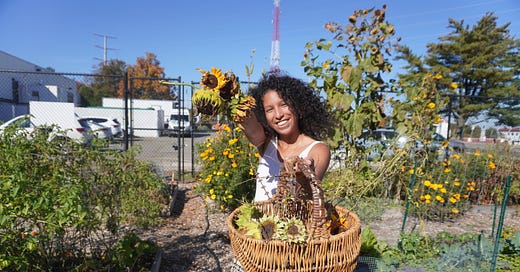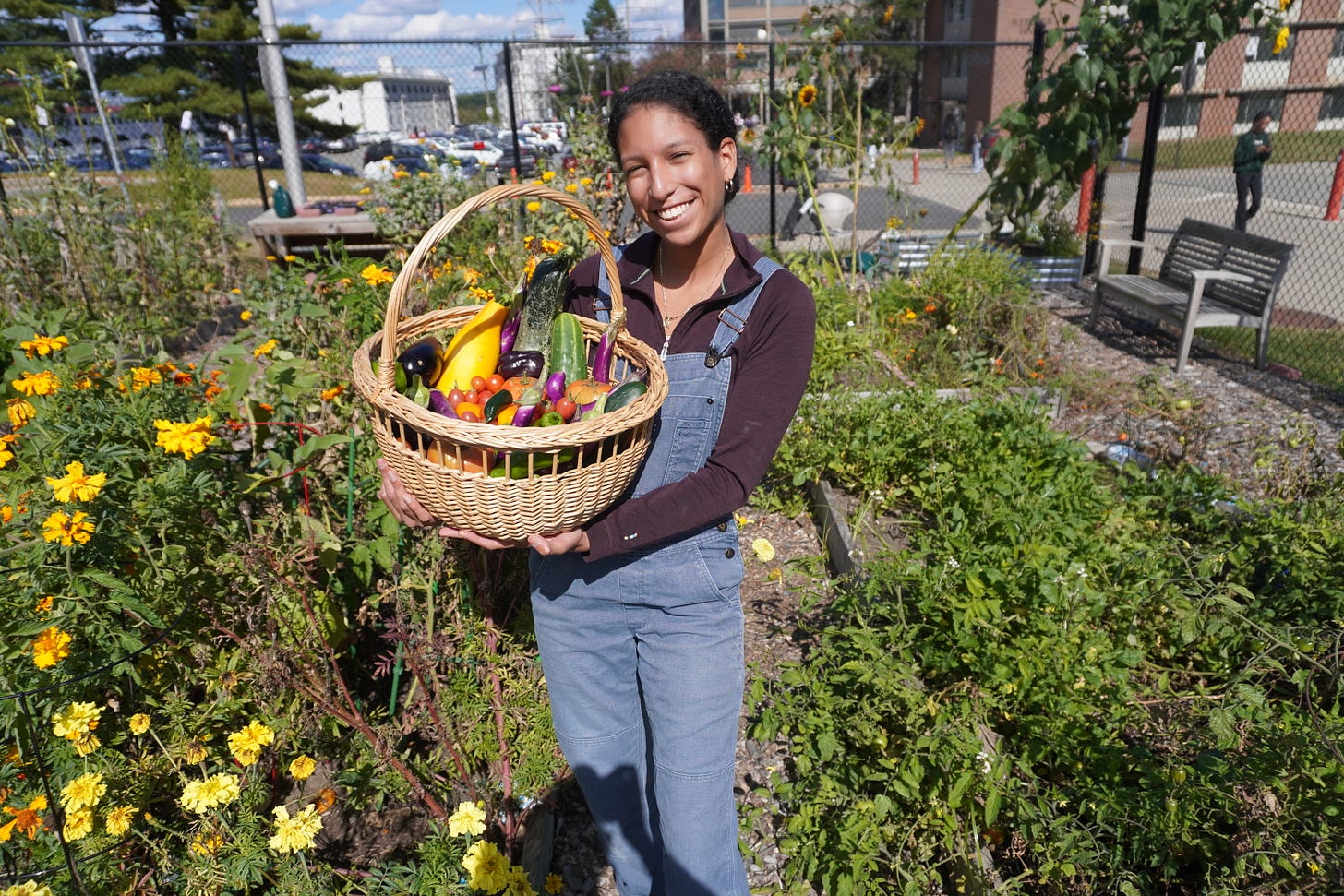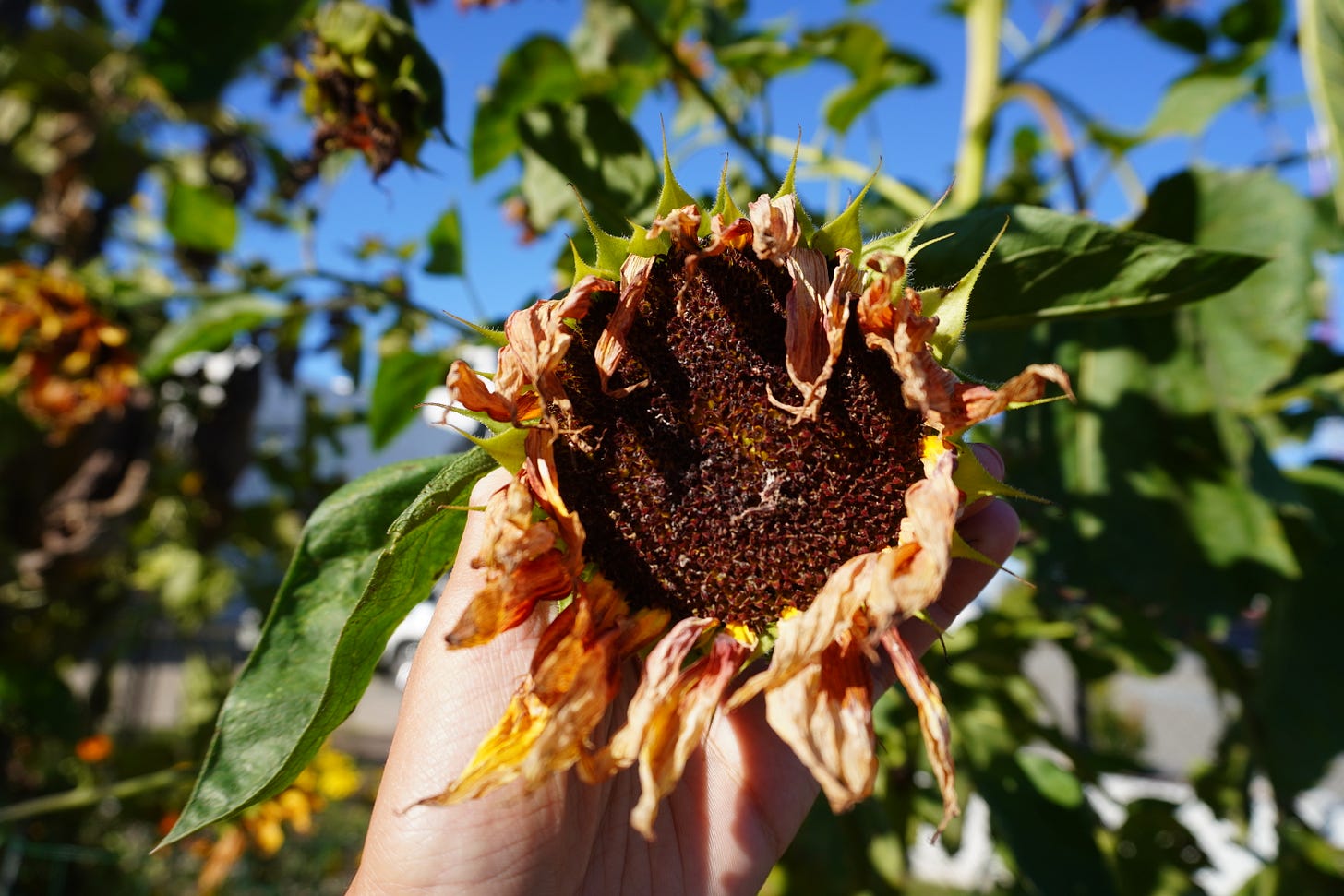A Browning Garden, Oh My!
What a changing season means for your garden and what YOU can do about it
I love walking into my garden, but I can’t help but notice the ticking clock in front of me. Days are getting shorter, Eggplants are growing a fraction of their size, tomato leaves are drooping, and cucumber leaves are shriveling up under the crisp air.
There’s a lot of orange from the marigolds and a lot of BROWN from the slow decay of life that was once a vibrant summer garden.
Yep, it’s happening... the season is changing, and your garden is telling you all about it. But don’t panic! A browning garden is not a failure; it’s a transition, and with a little TLC, you can help your plants gracefully adjust to the cooler months. 🍂
Let’s talk about what this seasonal shift means for your plants and, more importantly, what YOU can do to keep your garden happy and productive as we slide into fall.
🔥🔥 The Burning Question: What’s with the Browning?
First things first: why are your plants browning? Here’s the thing—just like us, plants feel the change in the air. As temperatures drop and daylight hours shrink, some plants naturally enter their end-of-season phase. This browning could be a sign of:
Cold Sensitivity: Plants like tomatoes, basil, and peppers just aren’t into cooler temps. They’re basically saying, “It’s been fun, but I’m ready to clock out for the season.”
Moisture Stress: Weather changes can mess with your watering schedule. Less sun means less evaporation, meanwhile, windy days can dry your plants out faster than expected.
Nutrient Depletion: After a busy summer of producing all that yummy food, your plants and soil might be saying, “Hey, I need a nutrient refill!”
What YOU Can Do About It 🌻
Before you throw in the trowel, I’ve got some tips to keep your garden thriving—because fall can be just as fun and bountiful as summer!
1. Extend Your Harvest with Fall Crops!
Did you know that some plants LOVE cooler weather? It’s time to swap out the summer stars and make way for crops like kale, spinach, and broccoli. These cool-weather champions can take a light frost and keep growing strong.
2. Compost Those Brown Leaves!
Instead of mourning those browning plants, celebrate them as future compost! Cut back any dead or dying plants and toss them into your compost pile. ( Keep weeds out of here!)
3. Mulch to the Rescue!
Adding a layer of mulch to your beds helps protect your soil from temperature swings. Plus, mulch helps retain moisture during those unpredictable fall weather shifts. Think of it as a cozy blanket for your garden as it prepares for its winter nap.
4. Time for a Garden Clean-Up
We all love a good spring clean, but fall clean-ups are just as important. Remove any spent plants, trim back overgrown perennials, and tidy up the garden. A clean garden not only looks better but helps reduce the risk of pests and diseases.
5. Plan for Next Year’s Greatness
At the end of your season while you’re putting your garden to bed, take a few moments to reflect on what worked well and what didn’t this season. What did you love growing? What veggies do you want to experiment with differently? Planning now will set you up for even greater gardening success next year.
Let’s Embrace the Change Together 🌱
Sure, we can’t control the seasons, but we can definitely adapt to them—and that’s what makes gardening so magical. Every browning leaf and changing plant is a reminder that we’re part of this beautiful, natural cycle. So instead of worrying, let’s embrace the new energy of fall, and keep those hands in the dirt.
And hey, if you need a little help figuring out your fall garden plan, you know where to find me. 😉
Here’s to gardens that grow with the seasons and gardeners who do the same! 🍁
xx Brittney
🔥Have any burning questions?!🔥






